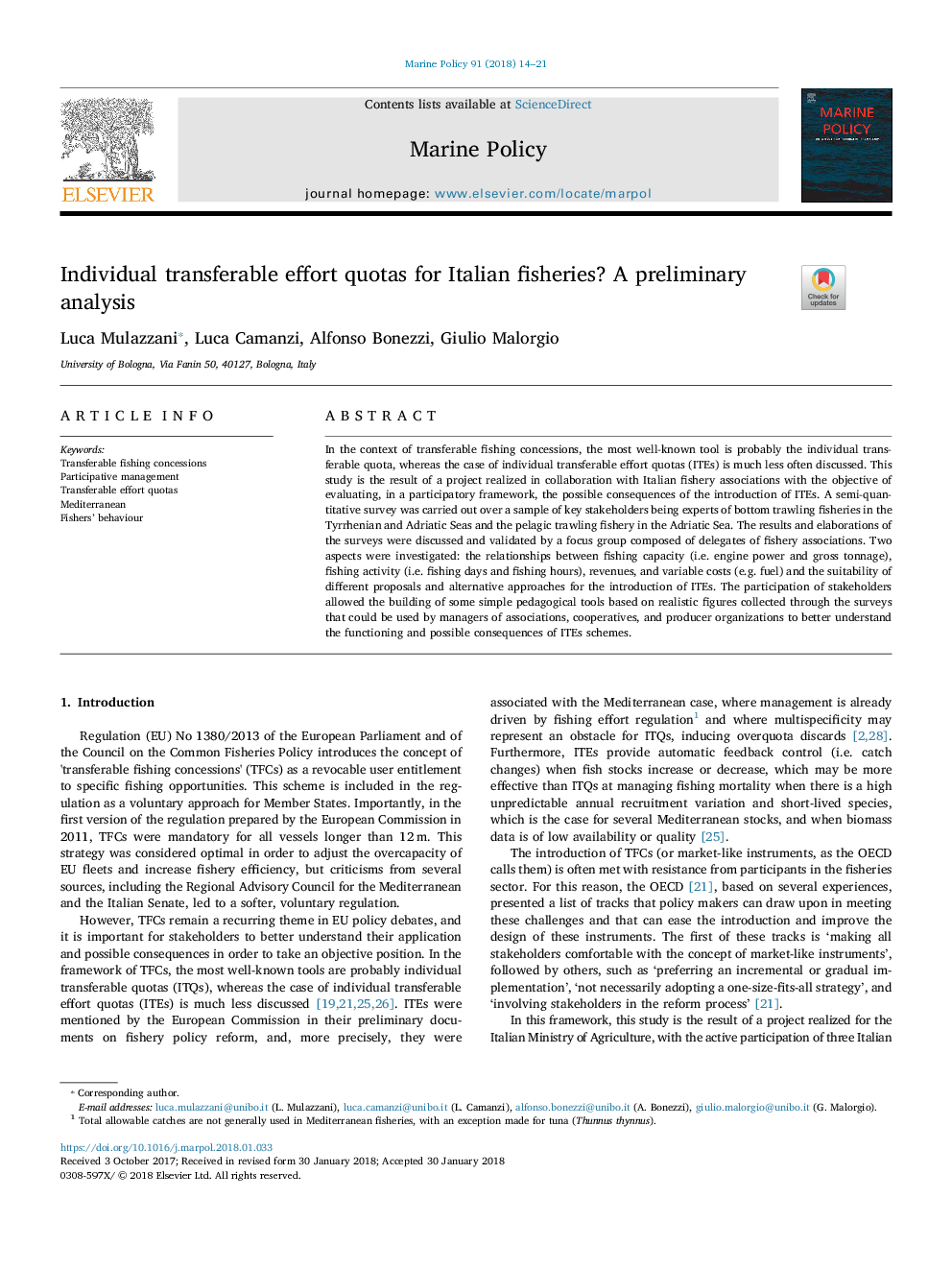ترجمه فارسی عنوان مقاله
سهمیه های قابل انتقال فرد برای ماهیگیری ایتالیایی؟ تجزیه و تحلیل اولیه
عنوان انگلیسی
Individual transferable effort quotas for Italian fisheries? A preliminary analysis
| کد مقاله | سال انتشار | تعداد صفحات مقاله انگلیسی |
|---|---|---|
| 95508 | 2018 | 8 صفحه PDF |
منبع

Publisher : Elsevier - Science Direct (الزویر - ساینس دایرکت)
Journal : Marine Policy, Volume 91, May 2018, Pages 14-21
ترجمه کلمات کلیدی
امتیازات ماهیگیری قابل انتقال، مدیریت مشارکتی، سهمیه انتقال قابل انتقال، مدیترانه، ماهیگیرها رفتار - اخلاق،
کلمات کلیدی انگلیسی
Transferable fishing concessions; Participative management; Transferable effort quotas; Mediterranean; Fishersâ behaviour;

